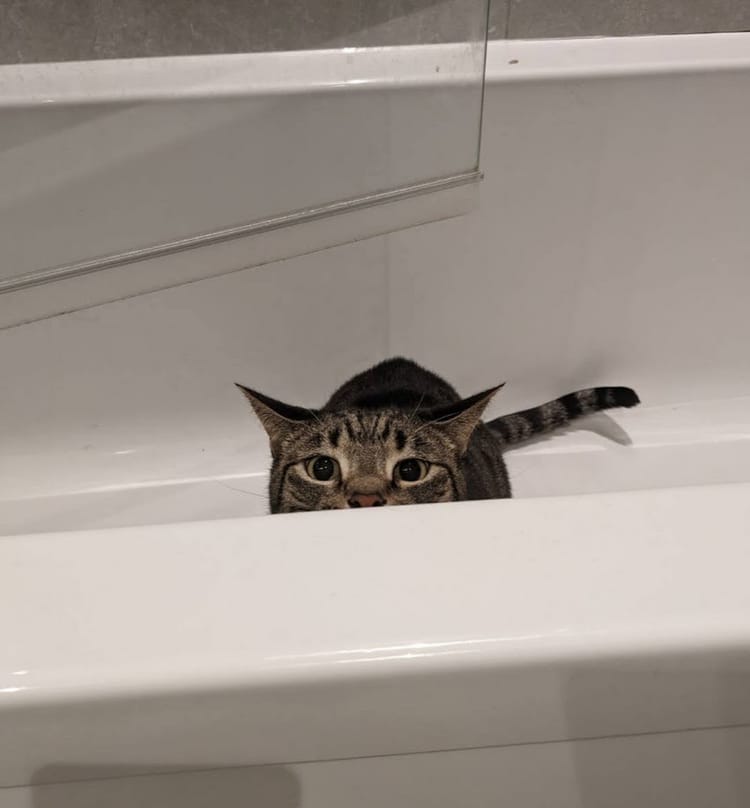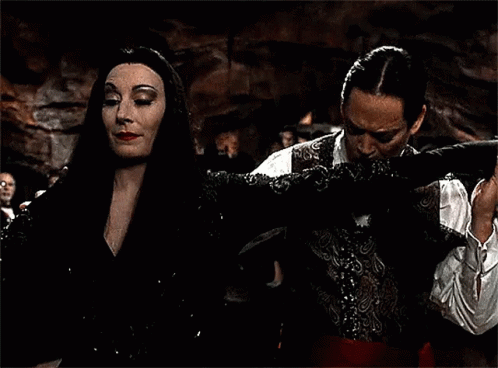On being a better host 👯♂️

Hello loves :)
Look at this very extremely thrilling thing I got in the mail yesterday!
Girls of Little Hope comes out on 13 June. If you're able to help me by spreading the word that week, or by pre-ordering the book, I'd be so grateful. All the details are here.
We've been getting some lovely reviews in from early readers. Charlie Human said it's “A perfect blend of small-town angst and creeping horror that hits on a cellular level. Irreplaceable friendships meet unstoppable forces in a brilliant novel that gives you a hug but then gets its hooks into you. A dark shard of genius from two uniquely-talented minds.”
In the meantime, here are five things that have been occupying my mind while I count the days!

1. Beef
As someone who considers herself deeply emotionally repressed, I'm loving that we're having a moment for stories about rage. People who have hit the limits of compassion, of rationality, of doing all the healthy emotional work, of the healing power of forgiveness ... and are just losing their shit. Maybe it's something about the simultaneous systemic fuckedness of the world right now; and the medicalised individualised syrupy self-helpyness of so much mental health content on the Internet which implies that people are only ever anxious and depressed because they have faulty personalities, not because the world can be quite an anxiety-inducing and depressing place. Whatever the cause, rage stories seem to be just what we need right now.
So, please can I direct your attention to the utterly brilliant new Netflix/A24 show Beef, about a road-rage incident which turns two strangers into enemies, spiralling into a vicious vendetta that rips both their lives apart. It's a showcase of Asian-American talent at every level of the production, from showrunner Lee Sung Jin's superb dialogue to Ali Wong and Steven Yeun's masterclass lead performances, to details like the original art by David Choe used as title cards.

Seneca said that anger "is above all other [emotions] hideous and wild, raging with an utterly inhuman lust for arms, blood and tortures... Anger [is] a short madness: for it is equally devoid of self-control ... forgetful of kinship."
But what Beef really understands is how close hate is to obsession, to passion. How energising it can be. Ali Wong's lifestyle entrepreneur Amy and Steven Yeun's out-of-luck handyman named Danny become mirrors for each other, masks they project all of their own failures and frustrations onto. Their series of escalating revenges are destructive and self-destructive, but also erotic, also liberating, also - ultimately - cathartic.
Shoowee, it's the best show I've watched in ages.
2. Hard versus soft sci-fi
I was recently discussing the difference between hard and soft sci-fi with one of my creative writing students (hard sci-fi strives for scientific accuracy, rational explanations and plausibility; soft sci-fi allows for stuff to just be fantastical). This led me to digging up my favourite example of this from all of children's fiction, from the start of Roald Dahl's Charlie and the Great Glass Elevator (the much weirder sequel to Charlie and the Chocolate Factory).

When our heroes find themselves in a great glass elevator soaring into the air like a rocketship, Grandma Josephine asks how this is possible:
"What keeps it up?" said Grandma Josephine.
"Sky hooks," said Mr Wonka.
"You amaze me," said Grandma Josephine.
"Dear lady," said Mr Wonka, "you are new to the scene. When you have been with us a little longer, nothing will amaze you."
"These skyhooks," said Grandma Josephine. "I assume one end is hooked on to this contraption we're riding in. Right?"
"Right," said Mr Wonka.
"What's the other end hooked on to?" said Grandma Josephine.
"Every day," said Mr Wonka, "I get deafer and deafer. Remind me, please, to call up my ear doctor the moment we get back."
Perfect.
3. One source of bad information
A lovely little poem by Robert Bly.
One Source of Bad Information
by Robert Bly
There’s a boy in you about three
Years old who hasn’t learned a thing for thirty
Thousand years. Sometime it’s a girl.
This child had to make up its mind
How to save you from death. He said things like:
"Stay home. Avoid elevators. Eat only elk."
You live with this child, but you don’t know it.
You’re in the office, yes, but live with this boy
At night. He’s uninformed, but he does want
To save your life. And he has. Because of this boy
You survived a lot. He’s got six big ideas.
Five don’t work. Right now he’s repeating them to you.
4. The Art of Gathering

A practical nonfiction book that I've been totally obsessed with recently is Priya Parker's The Art of Gathering: How We Meet and Why It Matters. It's a thoughtful guide to hosting better social gatherings This is one of those essential skills that is entirely invisible to most people, but I bet you that in any tight-knit community, you'll find a couple of people who put a lot of time and effort into designing the gatherings that keep that community tight. My mum is one of those people, and when I was younger I used to eye-roll at how she starts planning Christmas in October, how she insists on turning any party into a themed dress-up extravaganza. The older I get, the more I understand just what a generous, special skill this is. I'm trying to get better at it!
The book is packed full of insights, but my most helpful takeaways are these:
- When most people plan an event, they start by thinking about the category, and end up replicating the expected form of "birthday party" or "wedding" or "braai" or "family dinner" or "baby shower". This can lead to events that are formulaic and empty. A better place to start is to define a bold, specific purpose for the gathering. This gives you creative freedom to imagine an event that will feel meaningful. “When we don’t examine the deeper assumptions behind why we gather, we end up skipping too quickly to replicating old, staid formats of gathering.”
- Don't be a chill host. It's a gift to others to be thoughtful about designing an extraordinary gathering. "Gatherings crackle and flourish when real thought goes into them, when (often invisible) structure is baked into them, and when a host has the curiosity, willingness, and generosity of spirit to try."
- Invitations matter: they're the opportunity for you to persuade the attendees of the purpose of your gathering, to convince them to buy in to the rules of the temporary world you are creating. "The invitation is a proposed temporary, voluntary social contract."
- You can create a more playful gathering by setting explicit pop-up rules. "Pop-up rules are not controlling or boring, but rather a rebellion against etiquette." A rule could be something like "you are not allowed to tell anyone what you do for a living", or "the first person to touch their phone pays for the meal".
Yes, there are small moments where the book does veer into feeling like a lecture from Tahani from The Good Place, but mostly I loved it. I've already found myself putting some of the ideas into practice, channelling the extremely un-chill spirit of my mum, and throwing much better parties.
You should be able to order the book from your local bookshop, but there are some wonderful free resources on Priya Parker's website as a start (her newsletter is a treat).
5. Fair Play
Speaking of skills that most people need but few of us are ever explicitly taught, I recently came across a helpful framework for dividing household tasks fairly. The eternal conundrum!
Eve Rodsky's "Fair Play" consists of 100 cards representing common areas of responsibility in a household, everything from doing the dishes to planning date nights. The idea is that you and your partner(s)/housemates regularly sit down together, define what cards are in your deck (the tasks you value together), and then deal them in a way that feels fair (fair does not mean equal). For each card, you then discuss and agree on the minimum standard of care for each area of responsibility (for instance, yours might be, "dishes must be out of the sink by midnight every day", or more like ours, "five minutes before people come over, all the dishes which have been growing mould in various corners should be gathered up and washed frantically so no-one learns what trashpandas we are").
I like this system because it gets to two insights I've found very helpful when thinking about any form of collaborative project:
- Make the work visible. All of us have our blind-spots. My partner is much better than I am at cleaning up grime, but clutter is entirely invisible to him; I don't even notice if there's an inch of dirt on the floor but I can't handle a random sock lying on top of it. Explicitly listing all the work that needs doing makes it very clear if one person is slacking, or if both of you are actually doing a bunch of work the other doesn't even see.
- Divide responsibility, not tasks. An important point which Eve stresses: if you are responsible for something, you're responsible for it from beginning to end: conception, planning and execution. You are accepting the 'mental load' of that item, not just the execution of it.
You could buy the cards, but there's a lot of value in just watching the video and having a conversation with your partner(s) based on the principles she discusses. If household labour is a fraught topic in your family, this system seems like smart way to try something different.
--
Wishing you great parties, peace in your home, and unexplainable facts,
Sam






Member discussion